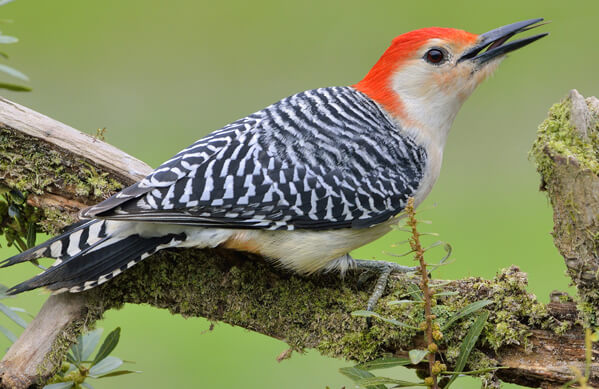Revealing the Keys of Woodpeckers: Habits, Environment, and More
Woodpeckers, with their one-of-a-kind behaviors and specialized adaptations, have actually long attracted scientists and nature lovers alike. These remarkable birds possess a variety of appealing secrets that dropped light on their survival approaches, habitat choices, and detailed communication approaches. By uncovering the secrets bordering woodpeckers' behavior and environment selections, a much deeper understanding of these avian wonders arises, using a glance into their remarkable world. What makes these birds absolutely exceptional, and exactly how do they browse their atmosphere with such precision and skill? Allow's explore the fascinating realm of woodpeckers and decipher the enigmatic information that make them such intriguing subjects of study.
Woodpecker Actions Insights
In analyzing woodpecker behavior, an interesting display of specialized skills and adaptations arises, losing light on their impressive environmental particular niche. Woodpeckers, understood for their distinctive drumming on trees, possess a selection of behavioral attributes that contribute to their survival and success in their setting.
Additionally, woodpeckers show a distinct feeding actions characterized by their capability to remove insects from tree bark utilizing their specialized beaks. Their long, barbed tongues help in recording victim, while their solid neck muscles supply security and precision during pecking movements. This feeding strategy allows woodpeckers to gain access to hidden insect larvae and extract them with exceptional performance.
Habitat Preferences and Selection
What factors affect the habitat choices and option of woodpeckers? One crucial factor influencing woodpecker environment option is the schedule of appropriate nesting sites. Woodpeckers normally favor woodlands with a mix of fully grown trees that offer sufficient chances for tooth cavity excavation.
Additionally, woodpeckers show a preference for environments with a bountiful supply of food resources. They are mainly insectivorous, eating beetles, ants, larvae, and other insects found in worn out timber or tree bark. Consequently, woodpeckers often tend to favor wooded areas with a varied insect populace to satisfy their nutritional requirements.
Additionally, the existence of dead or decaying trees is another key consider woodpecker habitat selection. These trees not just supply food sources but additionally provide suitable substratum for dental caries excavation. Dead trees are necessary for the maintenance of healthy woodpecker populaces, as they play an important function in the woodpeckers' life cycle and ecosystem characteristics.
Feeding Routines and Diet Plan Make-up
Woodpeckers demonstrate a specialized feeding actions focused on foraging for bugs within various environments. In addition to bugs, woodpeckers additionally consume tree sap, fruits, nuts, and seeds, adding range to their diet regimen depending on the season Click Here and schedule of food sources.
The foraging methods of woodpeckers are well-adapted to their arboreal way of living (Woodpeckers in Florida). Their capacity to excavate wood not only provides them with food but also helps in creating nesting tooth cavities and developing areas. Woodpeckers play a look at here crucial function in preserving the health and wellness of forests by managing insect populations and helping in the decay of timber. Comprehending their feeding routines and diet plan composition is vital for conservation efforts focused on protecting these distinct and valuable birds.
Drumming Sounds and Interaction
Using rapid drumming audios on numerous surfaces, woodpeckers employ a distinctive kind of communication to signal area borders and draw in mates. This drumming habits is not only a method of interaction however additionally functions as a method for woodpeckers to establish their visibility within a specific area. The intensity, rate, and pattern of the drumming can convey vital info to you can check here other woodpeckers around.
Woodpeckers utilize drumming sounds to introduce their existence in a territory and to advise off potential burglars. The loud and recurring nature of the drumming acts as a clear signal to other woodpeckers that the location is already asserted. This helps in reducing disputes and reducing physical battles in between individuals.

Survival Adaptations and Specialized Makeup

Conclusion
Finally, woodpeckers show special habits, such as drumming sounds for interaction, and have actually specialized composition for survival in their chosen environments. Their feeding routines and diet make-up additionally demonstrate their adaptability to numerous environments. By comprehending these facets of woodpeckers, researchers and guardians can better secure and maintain these interesting birds and their ecosystems.